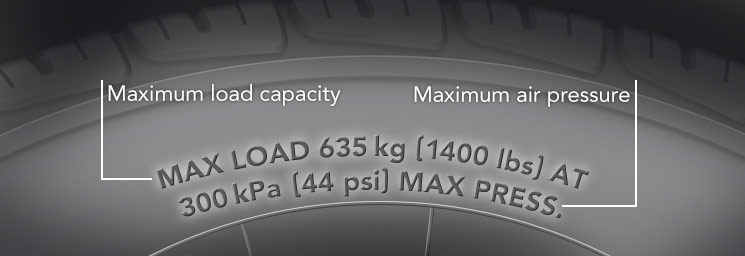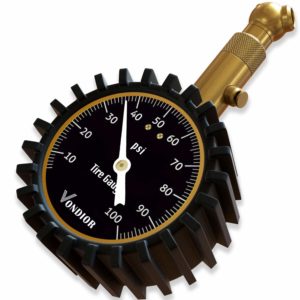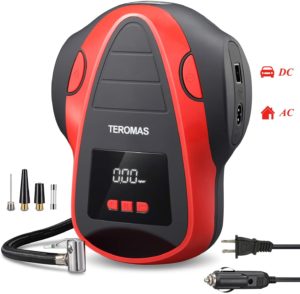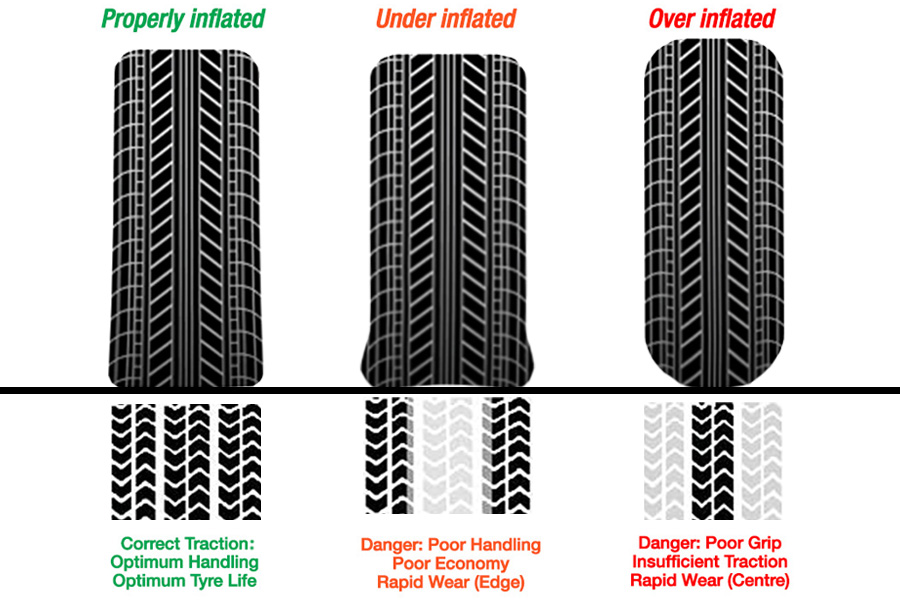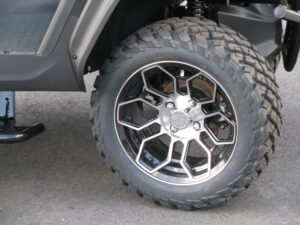Average Golf Cart Tire Pressure
Most golf cart tires will recommend a tire pressure somewhere between 15 and 25 psi (pounds per square inch) but some can reach up to 40 psi.
This puts the average tire pressure number at around 20 psi for a golf cart tire. Tires for different types of golf carts and from different manufacturers may vary from the average golf cart tire pressure. Most golf cart tires have the recommended psi imprinted somewhere on the tire’s sidewall. If you cannot find the psi on the tire for some reason, contact the manufacturer.
How to Adjust Your Golf Cart’s Tire Pressure
If you are going to own a golf cart, there are some useful tools that you should consider investing in to extend the life of your cart. You should treat your golf cart tires as if they were the tires on any other motorized vehicle. Here are some tools you can store with your golf cart for easy maintenance:
Pressure gauge: The first tool you will need for keeping your golf cart tires in good condition is a pressure gauge. To use a pressure gauge you simply need to remove the cap on the air valve of your tire and quickly press the end of the gauge into the valve. You should hear a short burst of air as you are pressing the gauge onto the valve. You can then pull the gauge away from the tire and see the displayed air pressure in units of psi.
Electric air pump: A portable electric air pump is the fastest way to put air into your golf cart tires. After checking the tire pressure with your gauge, determine whether you need to add air to the tire (pressure is too low) or release air from the tire (pressure too high). To add air pressure, plug in your electric pump and locate the nozzle where the air is dispensed. Hold the nozzle over the air valve of the tire and press onto it until you cannot hear air escaping anywhere. Every couple of seconds, pull the air pump away and check the pressure with your gauge again. Repeat this process until your tires have reached the appropriate psi.
Why Does the Appropriate Tire Pressure Matter?
Obviously, the appropriate tire pressure will allow your golf cart to move, but there are other reasons why you should check your tire pressure on occasion.
Prevent wearing out power systems: If your golf cart’s tire pressure is too low or high it can possibly damage the cart. Low tire pressure can cause your power systems like the battery and motor to work harder and in turn, wear out faster.
Extend the life of the tires: When tire pressure is too low, increased friction on the road can cause your tires to lose their tread sooner. When tire pressure is too high, it is possible for tires to pop, especially when abrupt force is applied to the tire. This can happen by hitting a pothole or somewhat pointed object.
Give a smoother ride: When tire pressure is too low, it can cause your golf cart to slow down due to increased friction. If your golf cart tire pressure is too high, it can reduce the ability of your tires to absorb energy causing a bouncy and uncomfortable ride.
How to Choose the Right Golf Cart Tires for Your Needs
When it comes to maintaining the correct tire pressure in your golf cart, the type of tires you choose plays a significant role. Different terrains, uses, and cart models require different types of tires, and each type will have its own recommended tire pressure range. Let’s explore how different tire types can affect performance, and why choosing the right tire for your golf cart is just as important as maintaining proper tire pressure.
Turf Tires vs. Off-Road Tires
Turf tires are the most common type of golf cart tire, designed primarily for smooth surfaces like golf courses. They tend to have a lower tread depth to minimize damage to grassy areas and provide a smooth ride. These tires typically require less air pressure, with a recommended range of 15 to 25 psi.
Off-road tires, on the other hand, are made for rugged terrains, such as dirt trails, mud, and gravel. They have deeper treads and are more durable. Off-road tires often require a higher tire pressure, sometimes up to 30-40 psi, to handle rough terrain and prevent damage. It’s important to check your cart’s manual or tire specifications to determine the correct psi for off-road driving.
Low-Profile Tires vs. Standard Tires
Low-profile tires are often chosen for their sporty look and better on-road performance. They have a smaller sidewall, which can enhance handling on smooth surfaces but may not be ideal for off-road use. These tires typically need higher air pressure to maintain their shape and provide a stable ride. Keeping low-profile tires properly inflated is crucial because under-inflation can lead to quicker wear and tear.
Standard tires are more balanced for various surfaces and typically have a higher sidewall. They are often more forgiving when it comes to absorbing shocks from uneven surfaces, making them a good choice for everyday use. These tires usually require moderate tire pressure, around 18-22 psi, depending on the load and terrain.
Radial Tires vs. Bias Ply Tires
Radial tires and bias ply tires are two different construction types you can find on golf carts. Radial tires have a design that allows the sidewalls and the tread to flex independently, which can lead to a smoother ride and longer tread life. These tires generally need a consistent air pressure to perform well, and maintaining the recommended psi is essential for even tread wear.
Bias ply tires have a stiffer sidewall and are generally more rugged, making them better for off-road or heavy-duty use. They can handle heavier loads and harsher conditions but may offer a rougher ride compared to radial tires. Bias ply tires may need slightly higher pressure to maintain stability under load.
The Impact of Temperature on Tire Pressure
Another factor to consider when maintaining golf cart tire pressure is temperature. Tire pressure can fluctuate with changes in temperature. In colder weather, tire pressure tends to drop, while in hot weather, tire pressure can increase. It’s a good idea to check your tire pressure more frequently when temperatures fluctuate. If you’re driving your golf cart in extreme conditions, adjusting the tire pressure to compensate for temperature changes can help you avoid under-inflation or over-inflation.
The Importance of Rotating Your Tires
Just like on a car, rotating your golf cart tires can help ensure even wear and extend their lifespan. The weight distribution on a golf cart may not be perfectly balanced, especially if you frequently carry heavy loads or passengers. By rotating your tires every few months or after a certain number of miles, you can help ensure that each tire wears evenly and maintains consistent performance.
Checking Tire Pressure on Different Surfaces
Golf carts are often driven on a variety of surfaces, from paved roads to grassy fields and rough off-road terrain. The surface you drive on can influence the tire pressure you need. For example, driving on hard surfaces like pavement might require slightly higher tire pressure to reduce friction and improve fuel efficiency. On softer surfaces like grass or sand, lowering the tire pressure can increase the tire’s surface area and improve traction, helping prevent your cart from sinking or getting stuck.
J’s Golf Carts
At J’s golf carts we can equip a golf cart with KENDA TERRA TRAC, 20X10-8, 4 PLY tires to accommodate different kinds of terrain. Check out our cool custom golf carts with the Kendra tires installed. With one of J’s golf carts, you can enjoy your ride on all terrains.

